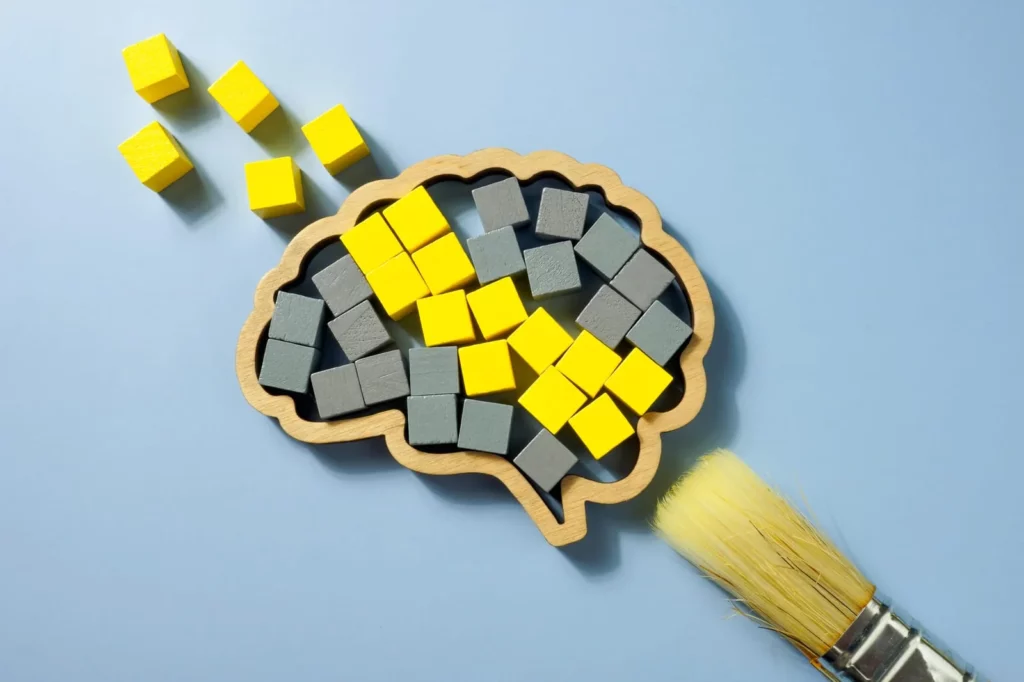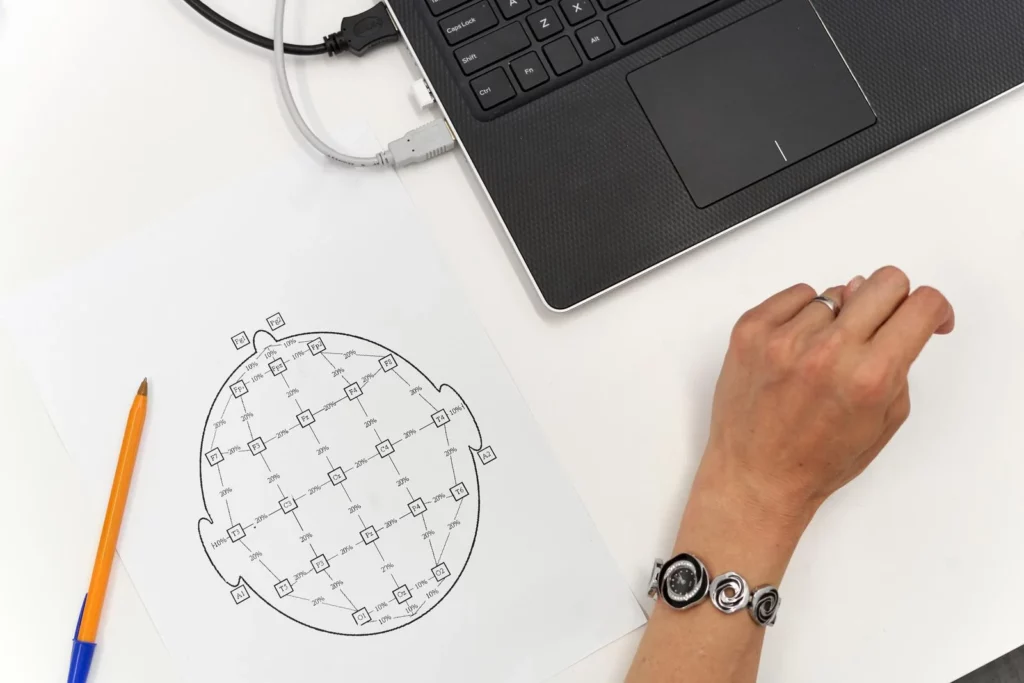Is TMS therapy at home a viable option for controlling symptoms of depression, OCD, anxiety, or other mental health issues? This article will explore the feasibility and potential benefits of using TMS therapy at home while addressing safety considerations and the way in which home-based TMS devices can make neurostimulation treatment more accessible to many people.

What is TMS therapy?
TMS therapy stands for transcranial magnetic stimulation. It’s a form of treatment that places electrodes on your head attached to a coil that sends magnetic impulses into your brain.
TMS therapy stimulates neurons in the deeper part of your brain that might not be getting enough blood flow or communicating correctly with the rest of your brain. TMS can be used to treat:
- Depression
- Trauma
- OCD
- Addiction
- Anxiety
- Migraines
Stimulating these areas is almost like a massage for the mind, changing the neuroplasticity of different neurons to improve your mood, bring certain areas of your brain back to normal function with improved blood flow, and reduce reliance on medication.
It is a convenient form of outpatient treatment that has its range of benefits: is not invasive, FDA-approved, convenient, and offers long-term relief. But what about a home TMS device?
Why do people consider TMS at home?
There are several reasons why people consider home TMS therapy. For some people, it’s simply because it’s much cheaper. One of the downsides to TMS treatment is that it is a newer form of therapy that many clinics don’t offer.
Because it’s so new, it might not be covered by your health insurance. In that case, it can be more expensive than traditional therapy, so people look for ways to cut costs.
Some people simply want to be more comfortable or have the freedom and flexibility to use home TMS therapy whenever possible.
Effectiveness of at-home TMS compared to clinical TMS therapy
You can buy home TMS therapy devices or even make a home TMS device using electrodes and a battery. These devices can stimulate the brain as long as it’s made well. This stimulation is noticeable, and it lasts for a few hours.
However, the effectiveness is not nearly as good as the controlled setting of a professional coil supervised in a clinical setting. So if you are looking to receive legitimate treatment for a mental health disorder like depression, it is significantly better for you to utilize a clinical TMS option over an at-home option.
Home TMS Therapy vs. Professional Therapy
There has been an emergence of several forms of TMS at home. A home TMS device can be purchased online that involves electrodes on either end of your forehead, inside of which you’ll find sponges to be soaked in salt water. A TMS home device is usually connected to a battery. But does it really work?
Effectiveness
Research indicates that a home TMS device can work to some degree. It can undoubtedly provide stimulation near the top of the brain, the effects of which might last for a few hours.
By comparison, professional settings are able to use higher-quality coils with more significant concentrations of saline solutions to ensure conductivity. This gives clients deeper penetration than you can get with a home TMS device. The effects usually last longer as well.
Design
You can find devices that let you do TMS therapy at home, which are simply electrodes that run through a hat you can wear over your head, connected to a battery. There are slightly better models available for a few hundred dollars. However, the designs you find for TMS at home simply won’t be as powerful, nor will they have the same level of control.
Some coils only target a small, precise area, like the at-home designs. The problem with that is that the regions that need to be addressed using TMS therapy are not always located in precisely the same place from one client to the next.
Professional devices are connected to a chair so you can sit comfortably with a coil on your head. These devices allow a professional to change the targeted region of the brain, not just stimulate either side of the forehead. Moreover, the level of magnetic impulse can be controlled with a professional design.

Rate of Decay
Tangentially when you use a TMS home device, the rate of decay might be faster. The intensity of the standard magnetic field around your brain is at its highest level near the top but decreases once you move downward from the scalp. For the magnetic impulses of TMS to be effective, they need to be powerful enough to reach deeper neurons in the brain fold.
So, this means you don’t get deep penetration into the brain with TMS therapy at home, but you still get some stimulation and noticeable changes. The changes mostly relate to improved memory, cognitive function, and energy in the brain.
By comparison, professional settings use devices that have a slower rate of decay, which means the impulses last longer and they can make it into the deeper brain folds to target improved blood flow and other changes to the neurons that might contribute to your mood and have an effect on things like clinical depression or generalized anxiety disorders.
Safety
Safety is a big concern. While TMS therapy is FDA-approved, no single body reviews and maintains quality assurance for at-home devices. This means individuals may not get a device that works as effectively or is as safe as one in a professional setting.
Summing Up
There is some viability to TMS at home if you are looking for stimulation to perform better on a specific task. However, there are still many challenges to this emerging treatment approach because there’s a lack of regulation in the market, not all devices work as well as professional devices, and there might be safety concerns.
If you are seeking legitimate treatment for a mental health condition, it’s best to consult a professional healthcare provider and consider TMS therapy in a clinical setting.
